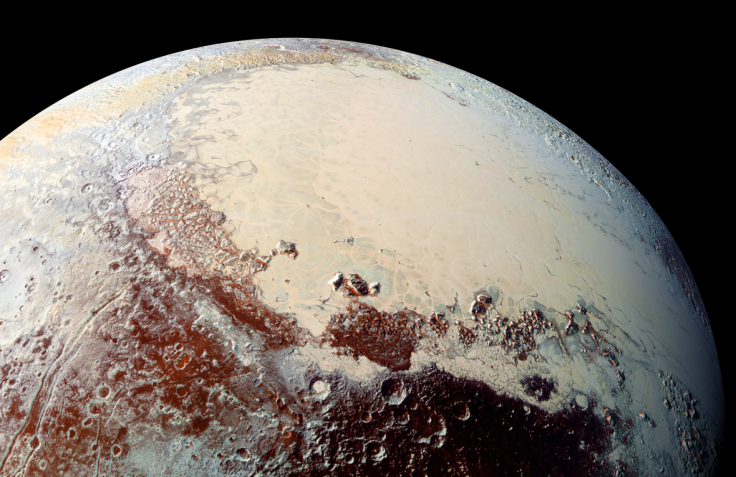Pluto’s Cold And Heavy Heart May Have Literally Depressed It When It Was Young

Pluto’s cold heart has been a source of intrigue for astronomers since it was first glimpsed by NASA’s New Horizons spacecraft last year. Despite being surrounded by a mottled terrain, this 1,000-mile region, known as Tombaugh Regio, is featureless, which could, as NASA previously remarked, be a sign of “ongoing geological processes.”
Of particular interest is a region known as Sputnik Planitia — the wide plane in the western lobe of the heart. Although researchers have put forward several hypotheses to explain its structure — processes involving nitrogen ice, hydrocarbons, and even liquid water — all of these identify the feature as an impact basin created by a smaller body striking Pluto at extremely high speed.
However, a new study published Thursday in the journal Nature argues that the creation of Sputnik Planitia may have been an “inevitable” consequence of the planet’s evolving geological processes. The study, based on computer models simulating the build-up of ice, suggests that the region formed early in Pluto’s history when the weight of accumulated ice pushed down the underlying surface.
“Pluto's big heart weighs heavily on the small planet, leading inevitably to depression,” study lead author Douglas Hamilton, a professor of astronomy at the University of Maryland, said in a statement. “The main difference between my model and others is that I suggest that the ice cap formed early, when Pluto was still spinning quickly, and that the basin formed later and not from an impact.”
The model also explains how Sputnik Planitia may have shifted Pluto’s center of mass — a process that, over a few million years, led to the dwarf planet locking one face toward its moon Charon.
This finding is similar to a previous study’s, wherein researchers posited that Sputnik Planitia most likely formed somewhere else on Pluto before gaining enough mass over the course of the dwarf planet’s evolutionary history as nitrogen-ice accumulated in it. This mass, coupled with the mass of the subsurface ocean, eventually tilted the planet to its current orientation.
The new study argues that this large mass would have had a 50 percent chance of either facing Charon directly or turning as far away from the moon as possible.
“The ice cap provides a slight asymmetry that either locks toward or away from Charon when Pluto's spin slows to match the orbital motion of the moon,” Hamilton said. “It is like a Vegas slot machine with just two states, and Sputnik Planitia ended up in the latter position, centered at 175 degrees longitude.”
© Copyright IBTimes 2025. All rights reserved.






















